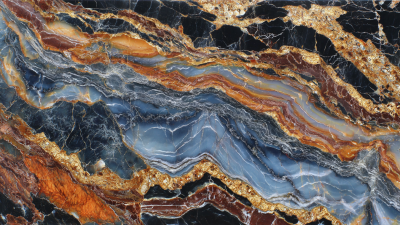
- Ginazhao@wanglumaterial.com
- Mon - Sat at 7:00AM to 9:00PM



In the rapidly evolving landscape of construction and interior design, Wpc Foam Board has emerged as a preferred material due to its incredible versatility and durability. According to a recent market research report by Smithers Pira, the demand for composite materials, including Wpc Foam Boards, is expected to grow at a CAGR of 7.3% through 2025, driven by an increasing preference for sustainable and lightweight building solutions. These boards not only offer excellent moisture resistance and thermal insulation but also provide an eco-friendly alternative to traditional materials. However, to fully leverage the benefits of Wpc Foam Board in your projects, it is crucial to implement key strategies that enhance performance and efficiency. This article will outline five essential tips tailored to help you maximize your Wpc Foam Board endeavors, ensuring that you achieve superior results while minimizing waste and costs.

When working with WPC (Wood-Plastic Composite) foam boards, understanding the material properties and density ratios is crucial for achieving optimal results in your projects. The density of the foam board can significantly affect its strength, durability, and weight. A higher density typically translates to increased tensile strength and resistance to wear, making it ideal for outdoor applications. Conversely, lower-density boards can be advantageous for projects requiring lightweight materials, such as signage or temporary displays.
To maximize your WPC foam board projects, consider the following tips. First, always choose the appropriate density for your specific application. If you’re crafting furniture or structures that need to withstand pressure, go for a higher density variant. Second, familiarize yourself with the thermal properties of the material. WPC foam boards exhibit good insulation characteristics, making them suitable for temperature-sensitive installations. Lastly, ensure you are using compatible adhesives and fasteners, as these can greatly influence the longevity and structural integrity of your final product.
By tailoring your approach according to material properties, you will significantly enhance the performance and aesthetic appeal of your WPC foam board projects.
When embarking on projects utilizing WPC foam boards, understanding industry-standard dimensions is crucial for maximizing efficiency. According to a report by the International Foam Association, the most commonly used dimensions for WPC foam boards are 4x8 feet and 5x10 feet. Choosing the right size often depends on the specific application—larger dimensions can minimize waste and streamline the cutting process, whereas smaller sizes are beneficial for intricate designs that require a high degree of accuracy.
One essential tip is to consider the thickness of the board. Common thicknesses range between 1/8 inch to 1 inch, which can significantly impact durability and insulation properties. For exterior applications, opting for a thicker board can enhance weather resistance and longevity. Another tip is to think ahead about the type of finishes your project may require; certain dimensions may work better with specific finishes, according to the Association of Home Appliance Manufacturers.
Lastly, planning your layout before cutting can lead to more efficient use of the material. Using advanced software for design visualization can aid in determining the best sizes and quantities needed, minimizing waste and saving costs. By paying attention to these dimensions and tips, you can ensure a smoother production process and superior end results for your WPC foam board projects.
When embarking on a WPC foam board project, leveraging advanced design techniques can significantly enhance the outcome. Utilizing CAD software plays a crucial role in maximizing customization and precision. With its intuitive interface and powerful features, CAD allows designers to create intricate models that accurately represent their vision. This digital environment fosters experimentation, enabling users to manipulate dimensions, shapes, and textures effortlessly. Additionally, the ability to visualize concepts in 3D helps in making informed decisions before any physical work begins.
Another advantage of using CAD software is the streamlined collaboration it facilitates among team members. By sharing digital files, stakeholders can provide feedback and make adjustments in real-time, ensuring everyone is aligned with the project goals. This collaborative approach not only saves time but also reduces the margin for error, leading to more successful project outcomes. Furthermore, the integration of CAD with CNC machinery can allow for precise cuts and designs, elevating the quality and professionalism of the final product. Embracing these innovative design techniques can truly transform WPC foam board projects, making them more effective and visually striking.
| Tip Number | Tip Description | CAD Software Feature | Expected Outcome |
|---|---|---|---|
| 1 | Choose the right thickness for your project. | Material Properties Analysis | Improved durability and performance. |
| 2 | Utilize accurate measurements for cuts. | Dimensioning Tools | Enhanced precision in assembly. |
| 3 | Leverage design templates to save time. | Template Library | Faster project turnaround. |
| 4 | Incorporate color and texture in your designs. | Visual Customization Options | Increased aesthetic appeal. |
| 5 | Plan for easy assembly and disassembly. | Assembly Simulation Tools | Streamlined project management. |
When it comes to optimizing WPC (Wood Plastic Composite) foam board usage, understanding material waste is crucial for cost-effectiveness. According to a recent market analysis by Smithers Pira, around 30% of composite material is often wasted during fabrication processes. By employing efficient cutting methods and advanced nesting techniques, companies can significantly reduce this waste. Implementing technology such as CAD software for precise planning can help designers maximize the usage of raw material, enhancing overall project profitability.

Additionally, embracing sustainable practices in WPC foam board projects not only minimizes waste but also appeals to environmentally-conscious consumers. A study published by the European Composites Industry Association notes that integrating post-consumer recycled content into WPC boards can reduce raw material costs by up to 10%. Recycling surplus material from previous projects into new constructs fosters a circular economy, ultimately contributing to lower operational costs and a reduced environmental footprint. By focusing on these strategies, businesses can ensure they're not just saving money, but also promoting sustainability in their projects.
When considering eco-friendly practices in foam board production and disposal, sustainability metrics play a crucial role in evaluating the environmental impact. Recent studies emphasize the importance of energy-efficient materials in reducing excessive energy demands, advocating for innovation in building practices that adhere to circular economy principles. This paradigm shift not only enhances performance but also aligns with the goal of minimizing waste throughout the product lifecycle.

To maximize your WPC foam board projects, consider the following tips: First, prioritize suppliers who utilize renewable resources and adhere to sustainable manufacturing processes. This not only reduces your carbon footprint but also supports the growth of eco-friendly products in the market. Second, explore opportunities for recycling and reusing foam board materials. Integral to the circular economy, this practice can minimize waste and improve overall sustainability metrics. According to recent advancements, enhanced methodologies in assessing circularity can provide valuable insights for optimizing material usage in construction and design projects.
Additionally, keeping abreast of emerging trends in sustainable building materials is essential. Utilizing innovations in production technologies can significantly improve both the performance and sustainability of foam boards. Striving for high circularity metrics ensures that your projects contribute positively to environmental goals while paving the way for future developments in eco-friendly construction practices.





